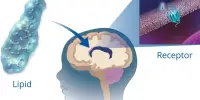Stargardt disease is an inherited eye condition that causes vision loss in young people. It is caused by a genetic mutation that affects the retina, a layer of cells at the back of the eye that is responsible for sensing light and converting it into electrical signals that the brain can interpret as images. The mutation causes the cells in the retina to break down, leading to vision loss.
There are several different genetic mutations that can cause Stargardt disease, and researchers are constantly working to identify new ones and understand their effects on the retina. It is possible that a recent study has identified a new cause of Stargardt disease, but without more information, it is difficult to say for certain.
Scientists discovered the first direct evidence that Stargardt-related ABCA4 gene mutations affect a layer of cells in the eye called the retinal pigment epithelium using a new stem-cell-based model made from skin cells (RPE). The discovery points to a new understanding of the progression of Stargardt disease and suggests a therapeutic strategy for the disease, which currently has no treatment. The research was carried out at the National Eye Institute (NEI), which is part of the National Institutes of Health. The findings were published today in Stem Cell Reports.
“This new model will accelerate the development of Stargardt disease therapies,” said NEI Director Michael F. Chiang, M.D. “We don’t have a treatment for this disease because it’s so uncommon. In theory, this model generates an infinite supply of human cells for research.” Stargardt affects about 1 in every 10,000 people in the U.S.
Our report provides guidance for a gene therapy approach to target RPE. Our findings suggest that, in addition to correcting ABCA4 deficiency in photoreceptors, gene therapies should also target RPE cells.
Kapil Bharti
Stargardt disease causes progressive loss of central and night vision. The vision loss is associated with the toxic build-up of lipid-rich deposits in the RPE, whose main job is to support and nourish the retina’s light-sensing photoreceptors. Under normal conditions, the ABCA4 gene makes a protein that prevents this toxic build-up. Prior research showed that Stargardt disease is caused by a variety of mutations in the ABCA4 gene. More than 800 ABCA4 mutations are known to be associated with a broad spectrum of Stargardt disease phenotypes.
The RPE helps photoreceptors by ingesting their spent outer segments, which helps to keep the cell pruned and healthy. Many scientists believe that in Stargardt disease, RPE cells die after ingesting toxic byproducts, which causes photoreceptor death and vision loss.
Much of what we know about Stargardt disease today comes from studying mouse models, which are inherently limited due to the disease’s wide genetic variability in humans. The NEI researchers were able to determine whether ABCA4 gene mutations directly affected the RPE independent of photoreceptors using a human RPE model.

To develop the model, the researchers took skin cells from Stargardt patients, converted them to stem cells, and then coaxed the stem cells to differentiate into RPE cells. Examining the patient-derived RPE, researchers detected ABCA4 protein on the RPE cell membrane. They explored the function of ABCA4 in RPE development by using the gene editing technology CRISPR/Cas9 to generate patient-derived RPE lacking ABCA4, called an ABCA4 knockout. They found that loss of ABCA4 did not affect maturation of the patient-derived RPE.
When RPE cells lacking ABCA4 were exposed to normal (wild type) photoreceptor outer segments, intracellular lipid deposits formed. Further investigation of the ABCA4 knockouts revealed evidence of defective RPE lipid metabolism as well as an impaired ability to digest photoreceptor outer segments, resulting in lipid deposits in RPE cells.
This is the first study to link the loss of ABCA4 function in human RPE to intracellular lipid deposits in those cells without the use of ABCA4 mutant photoreceptor outer segments. These lipid deposits may contribute to RPE atrophy and photoreceptor degeneration over time.
“Our report provides guidance for a gene therapy approach to target RPE,” said Kapil Bharti, Ph.D., senior investigator of the NEI Ocular and Stem Cell Translational Research Section. “Our findings suggest that, in addition to correcting ABCA4 deficiency in photoreceptors, gene therapies should also target RPE cells.”
This study is part of the NEI’s larger effort to address the scarcity of patient-derived stem cell lines for studying Stargardt disease. To overcome this challenge, the NEI launched a STGD1-iPSC banking program from patients with various ABAC4 mutations. These cells will be made available to the public for mechanistic and genotype-phenotype research.















